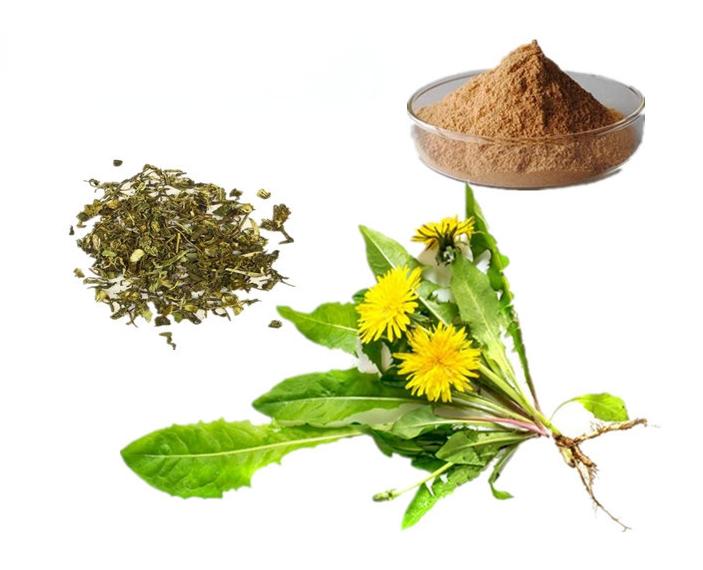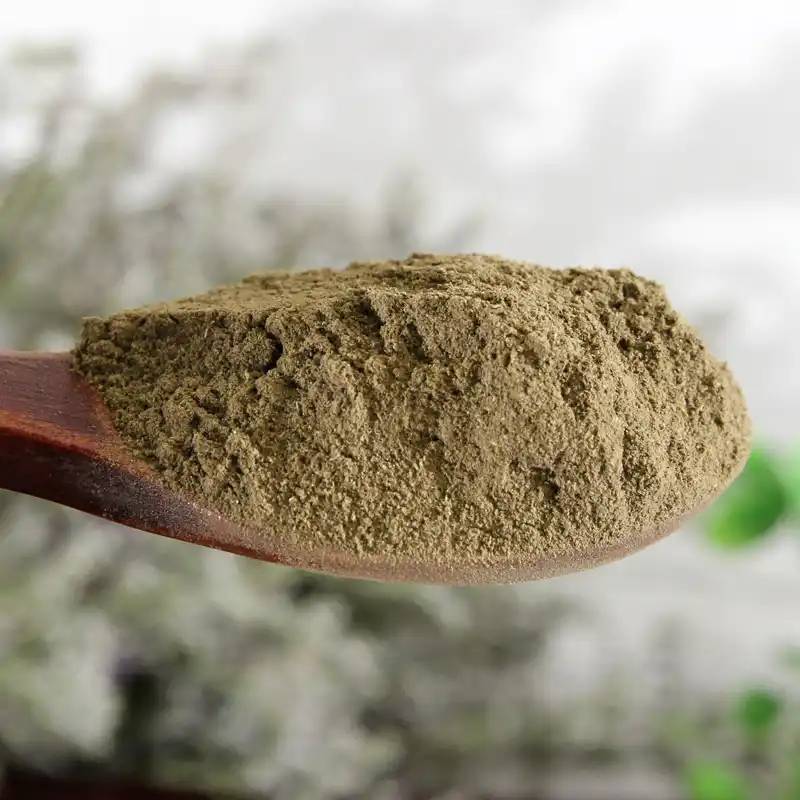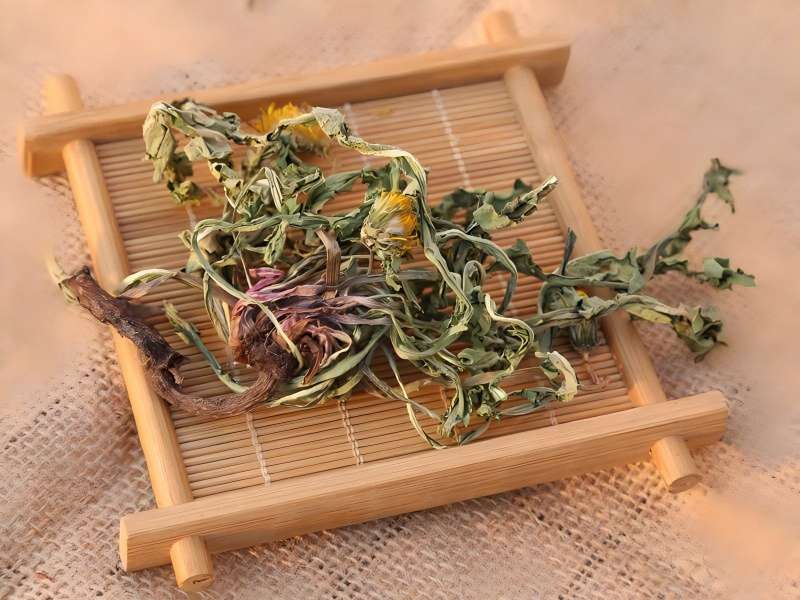What Is the Use of Dandelion Extract Dandelion Polysaccharide?
Dandelion is a perennial plant in the Asteraceae family that is widely distributed in the Northern Hemisphere[1]. In China, dandelion is found in most regions, with the most widespread distribution in Gansu, Shanxi, Qinghai and Xinjiang[2]. Dandelion is also a highly valuable medicinal plant. According to the Chinese Pharmacopoeia, dandelion has the effects of clearing away heat and toxins, reducing swelling and dispersing knots, and inducing diuresis and treating strangury[3]. Dandelion is rich in chemical components, including sesquiterpenes, flavonoids, phenolic compounds, polysaccharides, sphingolipids, essential oils, triterpenes, sterols, coumarins, etc. [4].
Among these, polysaccharides are one of the main bioactive components of dandelion, which have anti-tumor, anti-inflammatory, anti-oxidant, anti-fatigue, liver-protecting and hypoglycemic effects [5]. and can be used to treat diseases such as diabetes, cancer, and inflammation. Dandelion polysaccharides therefore have significant research value. This paper reviews the chemical structure, extraction and separation and purification methods, biological activity, and applications of dandelion polysaccharides, with the aim of providing a strong reference and basis for the further development and utilization of dandelion polysaccharides.

1 Dandelion polysaccharides and chemical structure
1.1 Dandelion polysaccharides
Polysaccharides are high-molecular carbohydrates formed by the condensation and dehydration polymerization of more than 10 monosaccharide molecules. They are widely found in living organisms. Plant polysaccharides are important components of plant bodies and have various biological activities such as antitumor, antioxidant, antibacterial and immunomodulatory activities [5]. Dandelion polysaccharides, as one of the main active ingredients of dandelion, have antibacterial, anti-inflammatory, antioxidant, anti-tumor and immunomodulatory effects[6]. Dandelion is rich in polysaccharides, accounting for about 30% to 50% of the dry weight[7]. Relevant studies have shown that dandelion leaves, flowers and roots all contain polysaccharides.
Yang Xiaojie [8] and others measured the highest polysaccharide content in dandelion roots at 42.75% using the phenol-sulfuric acid method, while the polysaccharide content in dandelion flowers was 11.21% and in the leaves 9.63%. Moreover, most of the polysaccharides in dandelion roots are storage polysaccharides, while most of the polysaccharides in dandelion leaves are functional polysaccharides. Among the different parts of the dandelion, the antioxidant capacity of polysaccharides is as follows: flowers > leaves > roots [9].
1.2 Chemical structure
The chemical structure of polysaccharides generally refers to the connection mode of their glycosidic bonds, degree of polymerization, configuration of the carbon atom with a different functional group, and molecular weight, etc. [10]. At present, research on the chemical structure of dandelion polysaccharides mainly focuses on the primary structure, including the composition and proportion of monosaccharides, the connection mode of monosaccharides, molecular weight, and glycosidic bond type. There are two main types of methods for studying the primary structure: chemical analysis methods and instrumental analysis methods.
Common chemical analysis methods include methylation analysis, acid hydrolysis, periodate oxidation, and Smith degradation, which can determine the monosaccharide composition, structure, glycosidic bond type, position, and proportion in dandelion polysaccharides. Instrumental analysis methods include high performance liquid chromatography, high performance osmotic gel chromatography, gas chromatography, infrared spectroscopy, ultraviolet spectroscopy, near-infrared spectroscopy, ion chromatography, mass spectrometry and nuclear magnetic resonance spectroscopy, which can determine the glycosidic bond type and configuration of dandelion polysaccharides, as well as the connection sequence on the polysaccharide chain and other information.
Dandelion polysaccharides are composed of a variety of monosaccharides. The main components of common monosaccharides include D-rhamnose, glucose, D-galactose, D-xylose and D-arabinose. Libo Wang [11] and others used an ultrasound-assisted enzymatic extraction method to extract dandelion leaf polysaccharides, which were purified by AB8 macroporous resin and Sephadex g-100 columns, obtaining a new polysaccharide (DLP-I) with a molecular weight of 87000 g/mol.
Structural characterization showed that polysaccharide DLP-I is composed of five monosaccharides: galactose, rhamnose, arabinose, glucose and mannose, with a corresponding molar ratio of 1. 14:1.00:1.05:4.76:1.52. 1D and 2D NMR spectra confirm that the sugar chain structure of DLP is →4)- α-D-Galp-(1 →, →4)-β-D-Manp-(1 →, →4)- α-D-Glcp-(1 →, →2,4)- α-L-Rhap-(1 →, and α-L-A raf-(1 → with branching at O-2 and O-4 of →2,4)- α-L-Rhap-(1 →. Liangliang C ai[12] and others isolated two new polysaccharides from dandelion root by the gradient ethanol precipitation method and column chromatography.(D RP-2b , DRP-3a). Structural analysis showed that DRP-2b has a molecular weight of 31.8 kDa and is composed of five monosaccharides: rhamnose, glucuronic acid, glucose, galactose and arabinose. The main chain is (1 →5)-α-D-Ara.
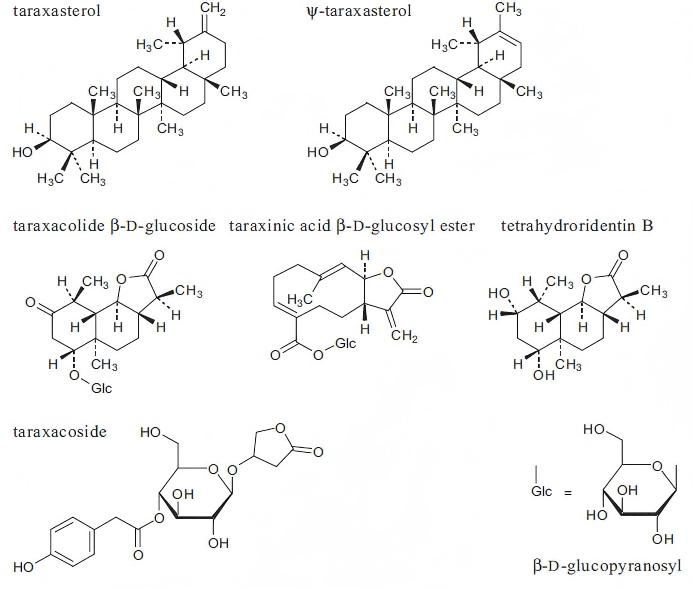
DRP-3a has a molecular weight of 6.72 kDa and is composed of four monosaccharides: rhamnose, glucose, galactose and arabinose, and the main chain is composed of (1 → 6) - α-D-Glc. Guo Huijing [13] obtained a high-purity dandelion polysaccharide TMP-1-1 and characterized its structure. The results showed that TMP-1-1 is a fructan composed mainly of β-furanose, and its main chain is composed of α-D-Glc/Manp-1- and -1-β-D-Glc/Manf-2-glycosidic moieties, and the glycosidic bonds are linked in the →2-β-D-Fruf-1 →2-β-D-Fruf-1 → manner. In addition, the α-D-Gl cp-1 → glycosyl group can be attached to the non-reducing end of the polysaccharide, and an acetyl group is attached to the hydroxyl group at C4. In addition, many researchers have explored the chemical structure of dandelion polysaccharides. Table 1 summarizes the structural characteristics of common dandelion polysaccharides in recent years.
2 Extraction and separation and purification of dandelion polysaccharides
The extraction and isolation and purification of polysaccharides is the key to studying and analyzing their purity, yield, polysaccharide structure and biological activity. There are many methods for extracting polysaccharides. Different extraction methods are selected according to different properties, and the resulting structure and activity will also be different to some extent. Common extraction methods for dandelion polysaccharides include hot water extraction, ultrasonic extraction, microwave-assisted extraction, and enzymatic extraction [13]. These methods have their own advantages and disadvantages. In order to more efficiently extract dandelion polysaccharides and study their structure, properties, and biological activity, researchers usually use single-factor testing-response surface analysis to find the best method for extracting polysaccharides.
2.1 Hot water extraction method
The hot water extraction method is a commonly used polysaccharide extraction method at home and abroad. The principle of this method is to use hot water to extract polysaccharides from plant tissues based on the property of polysaccharides being more soluble in hot water. The hot water extraction method has the advantages of simple process, simple equipment, single extraction solvent, no pollution from other solvents, environmental protection, and low cost [24]. Relevant studies have shown that temperature is a primary factor affecting extraction efficiency in the hot water extraction method. Increasing the temperature can increase the yield of polysaccharides, but too high a temperature can cause hydrolysis of the polysaccharides and destroy the polysaccharide structure.
Therefore, controlling the extraction temperature is key. Cao Zihang [6] and others used dandelion plants as raw material and optimized the extraction process of dandelion polysaccharides using hot water extraction. They determined that the optimal extraction process was when the extraction temperature was 89°C, the liquid-to-material ratio was 26 m L/g, and the extraction time was 125 min. Under these conditions, the dandelion extraction rate was the highest, at 19.47%. However, the traditional hot water extraction method has a large number of water-soluble impurities, and polysaccharides are difficult to separate from the cells, resulting in low extraction efficiency of the target components and difficulties in temperature control. Overall, compared with physical extraction methods such as ultrasound and microwaves, hot water extraction has low activity and low yield of plant polysaccharides.
2.2 Ultrasonic-assisted extraction method
The ultrasonic-assisted extraction method is an extraction method that uses the resonance and cavitation caused by ultrasound to break through the cell walls of plants and promote the penetration of the solvent into the cells, thereby dissolving the polysaccharides to the greatest extent possible [25]. Ultrasound can destroy the cell walls of plants within a few seconds, and the vibration promotes the uniform release of polysaccharides from the cells, dispersing them in the solvent for better dissolution and extraction.
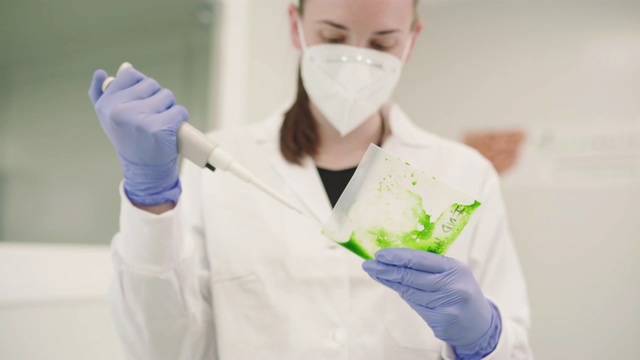
At the same time, the ultrasonic extraction process can prevent the high temperature during the extraction process from affecting the active substances, thereby increasing the extraction rate of polysaccharides. Therefore, the ultrasonic-assisted extraction method has the advantages of low energy consumption, short time, high efficiency, mild heating temperature, and no damage to effective ingredients during ultrasonic extraction [5]. Shu Yufeng [26] and others used the whole dandelion herb from Hubei Province as the raw material to study the effect of ultrasonic-assisted extraction on the yield of polysaccharides. The optimal extraction process was obtained by response surface method analysis: when the extraction temperature was 82.5°C, the time was 154 min, the power was 137 W, and the material-to-liquid ratio was 1:22 (g:mL), the yield of polysaccharides was the highest, 88.62 mg/g.
2.3 Microwave-assisted extraction method
Microwaves are electromagnetic waves with a frequency between 300 MHz and 300 GHz. The microwave-assisted extraction method uses electromagnetic waves of different frequencies to cause molecular vibrations in water, which in turn increases the temperature in the plant, increases the pressure, causes the cells to shrink until they burst, and finally causes the active ingredients in the cells to quickly precipitate [27]. Microwave-assisted extraction has the advantages of low energy consumption, less time-consuming, high selectivity, and high polysaccharide extraction rate.
However, too long an extraction time can also affect the activity of polysaccharides. Li Fen [28] used 5.0 g of dandelion samples and 100.0 mL of 80% (v/v) ethanol to ultrasonically degrease for 1 h. Afterwards, the precipitate was mixed with 150.0 mL of ultrapure water using a microwave heating instrument at 500 W for 6.5 min to extract the polysaccharides. The final yield was 8.75% ± 0.55%. Guo Xijuan [29] and others used dandelion as a raw material to study the process conditions for microwave extraction of dandelion polysaccharides. Optimization by single factor test and response surface method showed that the optimal process parameters were: time 14 min, liquid-to-material ratio 1:17, and alcohol concentration 64%. The extraction rate was highest, at 74.34%.
2.4 Enzyme extraction method
The enzyme extraction method is a method that uses enzymes to extract plant polysaccharides. Since plant cell walls contain components such as pectin and cellulose, the addition of enzymes during the polysaccharide extraction process can hydrolyze the plant cell walls and thereby accelerate the outflow of polysaccharides from the cell walls, taking advantage of the specificity of the enzymes [10]. The enzyme extraction method has the advantages of low cost, mild conditions, high extraction rate, and high purity of extracted polysaccharides. In enzyme extraction, factors such as the type and content of the enzyme, temperature, enzymatic hydrolysis time and extraction pH (potential of hydrogen) can all have a certain effect on the polysaccharide extraction rate.
Zhang Yongzhong [30] and others extracted dandelion polysaccharides by adding cellulase, and determined that the polysaccharide yield was 13.75%. Xu Lan [31] and others added papain to the extraction process for enzymatic hydrolysis, and obtained a polysaccharide yield of 3.11%. In addition to the extraction of a single enzyme, Liu Shanshan [32] and others used a synergistic double enzyme of cellulase and papain to extract dandelion root polysaccharides, and optimized the dandelion enzymatic hydrolysis process using a response surface method, obtaining a polysaccharide yield of 32.97%. The research data shows that in polysaccharide extraction, the extraction efficiency of using double enzymes or composite enzymes is better than that of using single enzymes. However, there are still relatively few relevant studies on the use of enzymatic methods, especially composite enzymatic methods, in dandelion polysaccharide extraction, and further research is needed to optimize the conditions and processes.
2.5 Other methods
In addition to the above methods, there are also some new technologies that are gradually being applied to the extraction of plant polysaccharides, such as supercritical fluid extraction, supercritical CO2 fluid extraction, subcritical extraction, extraction with eutectic solvents, ionic liquids, freeze-thawing and cold pressing, pressurized hot water extraction, high-speed shear homogenization extraction, etc. [33], but they are not yet widely used in the extraction of dandelion polysaccharides.
In addition, the above extraction methods also have their own advantages and disadvantages. Relying on a single extraction method to extract polysaccharides has certain limitations. Therefore, in the process of extracting polysaccharides, researchers often combine the above methods to improve the extraction efficiency of polysaccharides. For example, ultrasonic-assisted enzyme extraction, microwave-assisted enzyme extraction, ultrasonic-microwave-assisted water extraction, etc. The combined use of paired extraction methods can give full play to their respective advantages, thereby improving extraction efficiency, purity, reducing errors, costs and operational difficulties, to achieve wider applicability and better experimental results. In actual polysaccharide extraction, suitable methods should be selected and combined according to specific circumstances to achieve the best experimental results.
2.6 Separation and purification of dandelion polysaccharides
The dandelion polysaccharide obtained by the above method is still only crude polysaccharide, which contains impurities such as protein, pigment, inorganic salt and small molecules, which will interfere with the study of the biological activity and structure of polysaccharides. Therefore, in order to obtain accurate analysis results, the crude polysaccharide needs to be further separated and purified to obtain a single polysaccharide [21].
2.6.1 Methods for deproteinizing dandelion polysaccharides
Common methods for removing protein from dandelion polysaccharides include Sevag method, trichloroacetic acid (TCA) method, protease method and salting-out method [34]. Among them, the Sevage method is a commonly used method for removing protein. By adding a mixture of chloroform and n-butanol to the polysaccharide extract and shaking it well, the free protein can be denatured and removed as an insoluble colloid.
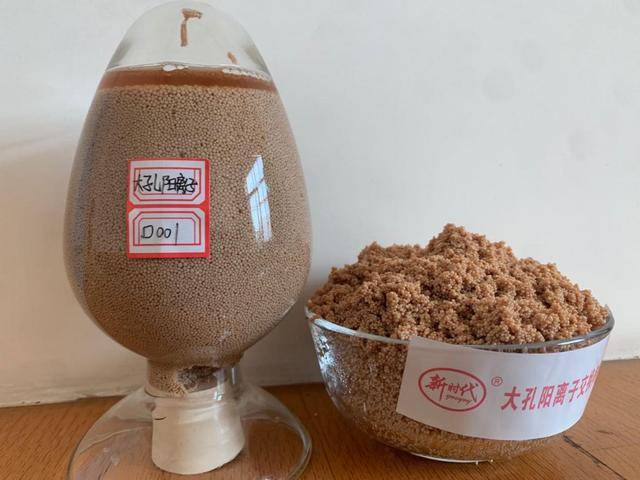
The advantage of the Sevage method is that the conditions are mild and and is suitable for a wide range of applications. However, it has a high polysaccharide loss rate, is time-consuming and less effective, and multiple treatments are required to completely remove the protein. The TCA (trichloroacetic acid) method mainly uses trichloroacetic acid, which is a strong acid that can generate an acidic environment. Under these conditions, trichloroacetic acid reacts with the amino acids in the protein to form insoluble trichloroacetate salts, which cause the protein to precipitate. This method is simple to operate, but it does affect the structure of the polysaccharides to some extent. In contrast, the salting-out method does not damage the structure of the polysaccharides and has the advantages of being low-cost, environmentally friendly and low-toxicity. However, it has a relatively poor protein removal effect. The protease method has a low polysaccharide loss rate and a good protein removal effect, but it has strict requirements and the process is unstable [35].
2.6.2 Dandelion polysaccharide decolorization method
Common decolorization methods include activated carbon adsorption, macroporous adsorption resin, and H2O2 (Hydrogen Peroxide) oxidation decolorization [36]. Activated carbon has a developed pore structure, large surface area, and strong adsorption capacity, which can bind the pigment in the polysaccharide to achieve the purpose of decolorization. The activated carbon method has the advantages of being simple to operate, low cost, strong adsorption capacity for pigments, and wide application. However, this method also tends to adsorb polysaccharides along with the pigments, resulting in a loss of polysaccharides, and the residue of the activated carbon is not easy to completely remove after decolorization [37].
Macroporous adsorption resin is a type of decolorizing agent with adsorption properties. Due to its characteristics, such as a good macroporous network structure, large specific surface area, fast adsorption speed, low price, simple regeneration, and long service life, macroporous adsorption resin is suitable for large-scale use in industrial production. The H2O2 oxidation and decolorization method mainly uses free HO2- to oxidize the pigment, thereby achieving the purpose of decolorization. Because H2O2 is a strong oxidant, although the method has a good decolorizing effect, the oxidation process is likely to damage the structure and properties of the polysaccharide.
In addition to proteins and pigments, crude polysaccharides also contain some small molecular impurities, which can be removed by dialysis, ultrafiltration and chromatography. After the above-mentioned impurity removal, the polysaccharide is still a mixture, and its physical properties, chemical composition, and molecular shape are heterogeneous. If you want to obtain pure polysaccharides, you need to further purify the polysaccharide mixture. Commonly used purification methods include: precipitation, column chromatography, and membrane separation [38].
3 Biological activity of dandelion polysaccharides
3.1 Antitumor effect
Studies have shown that dandelion polysaccharides have certain antitumor activity. Hepatocellular carcinoma is a common malignant tumor disease, with the fourth highest incidence rate and the second highest mortality rate in China. Feng Ren [39] and others experimentally confirmed that dandelion polysaccharides can reduce the iron load of tumor tissue in Hepa1-6 (Mouse Hepatoma Cell Line Hepa1-6, mouse hepatoma cell Hepa1-6) H22 (Mouse Hepatoma Cell Line H22, mouse hepatoma cell H22) tumor tissue in tumor-bearing mice and the iron load of liver cancer cells. In addition, dandelion polysaccharides can also regulate the expression of hepcidin in vivo and in vitro by inhibiting the phosphorylation of JAK2 (Janus kinase 2) and STAT3 (Signal Transducer and Activator of Transcription 3). In summary, dandelion polysaccharides can regulate hepcidin expression by inhibiting the activity of the JAK/STAT signaling pathway, thereby inhibiting the growth of HCC (hepatocellular carcinoma).
Pei Chen [23] and others extracted an acidic water-soluble polysaccharide DLP120 from dandelion leaves, and showed in vitro that DLP120 can inhibit the proliferation of tumor cells by blocking the S phase of the cell cycle in HepG2 (Human Hepatocellular Carcinoma Cells) cells. Niu Hu [40] investigated the effect of dandelion polysaccharides on breast cancer through in vitro and in vivo experiments. The results showed that dandelion polysaccharides can inhibit Bcl-2 protein (B-cell lymphoma-2) by activating P53 (Tumor Protein p53) and Bax protein (BCL2-associated X protein), which leads to apoptosis and growth inhibition of breast cancer cells, thereby exerting an anti-breast cancer effect.
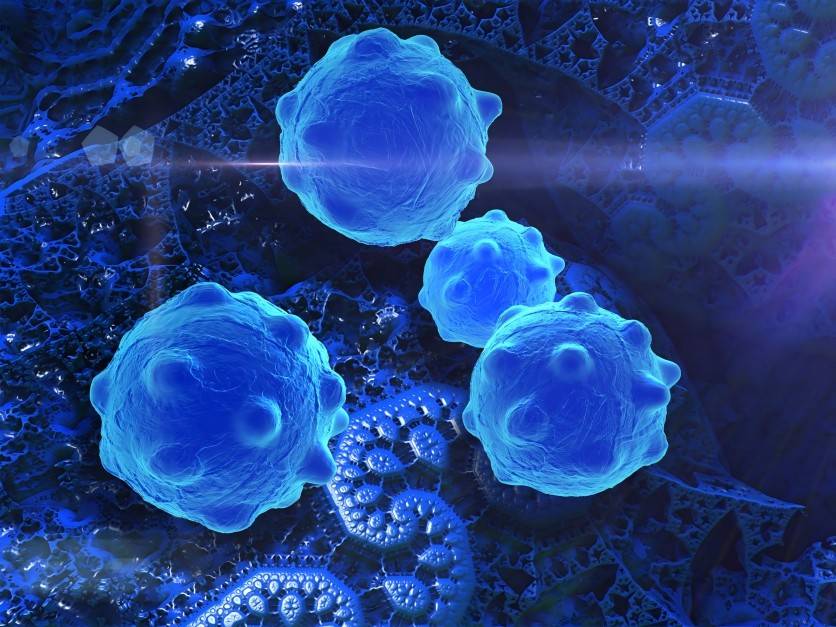
3.2 Bacteriostatic effect
Song Xiaoyong [41] and others studied the antibacterial activity of Staphylococcus epidermidis, Staphylococcus aureus, Escherichia coli, Salmonella and Streptococcus by agar dilution method and paper disc diffusion method, and concluded that the order of antibacterial activity of dandelion polysaccharides against bacteria is Escherichia coli>Staphylococcus aureus>Staphylococcus epidermidis>Salmonella>Streptococcus. Wang H[42] et al. extracted a water-soluble dandelion polysaccharide by a cellulase-assisted method and determined that it has a bacteriostatic effect on Bacillus subtilis, Staphylococcus aureus and Escherichia coli.
Xiao Chaoyong [22] and others investigated the in vitro antibacterial activity of dandelion polysaccharides by measuring the diameter of the bacteriostatic circles and the minimum bacteriostatic concentration of dandelion polysaccharides against a variety of bacteria. The results showed that dandelion polysaccharides inhibited Escherichia coli, Bacillus subtilis, Staphylococcus aureus and Pseudomonas aeruginosa. In summary, dandelion polysaccharides exhibit a broad antibacterial effect against a variety of bacteria and have the potential to be used in the food and pharmaceutical industries.
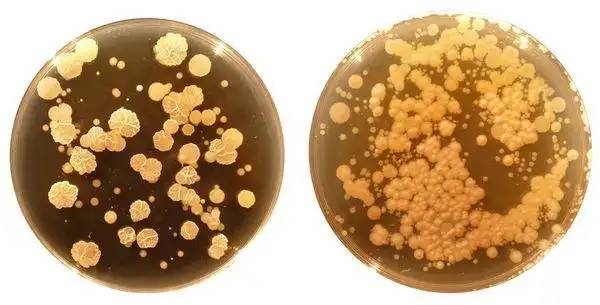
3.3 Antioxidant effect
Reactive oxygen species (ROS) are a general term for metabolic products and oxygen-containing derivatives that are more chemically active than oxygen. Reactive oxygen species play an important role in cell signal transduction and maintaining homeostasis, but excessive reactive oxygen species can easily damage cell structures and increase the risk of disease. Therefore, it is very important to identify an antioxidant that can protect the body from the damage caused by reactive oxygen species.
Xiao Chaoyong [43] and others used Vc (Vitamin C) as a positive control to qualitatively investigate the in vitro antioxidant activity of dandelion polysaccharides. found that dandelion polysaccharides have a strong scavenging effect on DPPH (2,2-diphenyl-1-picrylhydrazyl, 2,2-diphenyl-1-picrylhydrazyl) free radicals, hydroxyl radicals, and superoxide anion radicals, and are stable. Xu Jin [44] and others used ultrasonic cell crushing technology to assist in the extraction of dandelion leaf polysaccharides, and the optimal extraction process was obtained by response surface method. At this time, the IC50 values (half maximal inhibitory concentration) of dandelion leaf polysaccharides for scavenging DPPH free radicals, superoxide anion free radicals, and hydroxyl free radicals were 34.62, 0.98, and 12.16 mg/mL, respectively, which indicates strong antioxidant properties.
3.4 Anti-inflammatory effect
Tian Hua [45] and others found through mouse experiments that TNF-α (Tumor Necrosis Factor-alpha), IL-6 (Interleukin-6), PGE2 (Prostaglandin E2), COX-2 (Cyclooxygenase-2), iNOS (Inducible Nitric Oxide Synthase), ph-ERK1/2 protein (phosphorylated extracellular regulated protein kinases 1/20, phosphorylated extracellular regulated protein kinases 1/2) expression levels were significantly lower than those in the model group, while IL-10 (Interleukin-10, interleukin-10) content was significantly higher than that in the model group. This result shows that dandelion polysaccharides can reduce the inflammatory response of the gastric mucosa in rats with H. pylori-related gastritis by inhibiting the MAPK/ERK pathway (Mitogen-Activated Protein Kinase/Extracellular Signal-Regulated Kinase Pathway), thereby protecting the gastric mucosa.
Li Huan [46] and others investigated the anti-inflammatory effect of dandelion polysaccharides on the inflammation model caused by lipopolysaccharide in the mouse mononuclear macrophage cell line (RAW264.7). They found that dandelion polysaccharides can significantly inhibit the secretion of NO (Nitric Oxide) by mouse mononuclear macrophages, and down-regulate the expression of TNF- α, IL-1 β (Interleukin-1 β Cell), Interleukin-1β Cell, white blood cell interleukin-1β cell), IL-6, and down-regulated the expression of LPS (Lipopolysaccharide, lipopolysaccharide)-induced RAW264.7 cell inflammatory response.
Shengkun Yan [47] and others used a DSStreated mouse model to evaluate the therapeutic effect of dandelion polysaccharides on colitis, and used the IEC-6 (Rat Intestinal Epithelial Cell Line No. 6, rat small intestinal epithelial cell) rat intestinal epithelial cell line for in vitro evaluation. The results showed that dandelion polysaccharides have an inhibitory effect on the activation and transcription levels of inflammatory mediators such as IL-1β, IL-6, TNF-α and iNOS (Inducible Nitric Oxide Synthase, inducible nitric oxide synthase) and MPO (myeloperoxidase) activation and transcription levels. Dandelion polysaccharides can trigger the activation of Nrf2 (nuclear factor erythroid 2-related factor 2), and Nrf2 in turn exhibits anti-inflammatory activity.
3.5 Hypoglycemic effect
Diabetes is a chronic disease characterized by hyperglycemia. Guo Huijing [48] and others used an ultrasound-assisted extraction method and an ethanol gradient precipitation method to obtain four crude dandelion polysaccharides. These four polysaccharide samples all had a certain inhibitory effect on α-glucosidase within the test concentration range, and as the mass concentration increased, their inhibitory effect gradually increased, showing a dose-response relationship. Jingwen Li[49] and others found that the polysaccharides in dandelion root extract have a significant inhibitory effect on both α-glucosidase and α-amylase, and that the synergistic effect of dandelion polysaccharides and astragalus extract can significantly increase glucose consumption and intracellular glycogen content in IR-HepG2 cells, increase the activity of hexokinase and pyruvate kinase, which has a better hypoglycemic effect.

3.6 Hepatoprotective effect
Many experimental studies have shown that dandelion polysaccharides have a protective effect on the liver. Liangliang Cai [12] and others isolated two α-type polysaccharides, DRP1 and DRP2, from dandelion roots, and found that both DRP1 and DRP2 can protect the liver from APAP (N-Acetyl-p-aminophenol)-induced liver damage.
Li Shuang [50] used a CCl4 (Carbon Tetrachloride, Carbon Tetrachloride) induced HF (Hepatic fibrosis) mouse model, and observed and statistically analyzed the changes in body weight, liver index and pathological characteristics of the mice. It was found that the dandelion polysaccharide group, astragalus polysaccharide group and dandelion polysaccharide + astragalus polysaccharide group could all alleviate liver fibrosis in mice to varying degrees.
And at the same dose, the efficacy of the dandelion polysaccharide + astragalus polysaccharide group was stronger than that of the single polysaccharide group, indicating a synergistic effect of the two polysaccharides. The mechanism of action against liver fibrosis may be related to the “gut-liver axis” immune system and TLR4 (Toll-like receptor 4, Toll-like receptor 4)/Myeloid Differentiation Primary Response Gene 88 (Myeloid Differentiation Primary Response Gene 88)/NF-κB (Nuclear Factor kappa-light-chain-enhancer of activated B cells, Nuclear Factor-κB) signaling pathway. It affects the abundance of each phylum by regulating the composition of the intestinal flora, promote the expression of SCFAs (short-chain fatty acids), down-regulate the TLR4/My D88/NF-κB signaling pathway, reduce LPS content, thereby reducing the level of inflammatory factors, restore the intestinal mucosal barrier, and improve liver fibrosis.
3.7 Immune regulation
In the body, the immune system is involved in various physiological processes and plays a very important role in resisting pathogen invasion, monitoring, and maintaining the stability of the internal environment. Natchanok Talapphet [18] and others used hot water extraction and ethanol precipitation to extract three types of dandelion polysaccharides, and tested the immunostimulatory activity of the polysaccharides on RAW264.7 mouse macrophages in vitro. The study showed that dandelion polysaccharides can activate the MAPK and NF-KB pathways through TLR4, TLR2 (Toll-like receptor 2) and CR3 receptors (Complement Receptor 3), activate RAW264.7 cells to produce a large amount of NO and up-regulate the expression of various mRNA (messenger RNA), messenger ribonucleic acid) expression, while the protein content of the polysaccharide also helps to activate RAW264.7 cells.
Shuxuan Shan et al. [51] selected 300 one-day-old broiler chickens for the experiment to investigate the effects of dandelion polysaccharides on the growth, immunity and serum biochemical indicators of broiler chickens. The results showed that dandelion polysaccharides can activate lymphocytes and cause them to divide and proliferate, thereby increasing the weight of the immune organs and the immune organ index. In addition, activated lymphocytes can also secrete cytokines and immunoglobulins, ultimately enhancing the body's immune function.
3.8 Anti-fatigue and anti-mutagenic effects
Hu Baosheng [52] found through experiments on the effects of dandelion polysaccharides on the exhaustion swimming time of mice, on lactic acid and lactate dehydrogenase, and on the determination of serum urea nitrogen and liver glycogen content that dandelion polysaccharides can promote the body's ability to remove lactic acid, increase liver glycogen reserves, and enhance the anti-fatigue ability of mice by increasing the reserves of energy substances.
Yang Xiaojie [53] and others used the MTT method (3-(4,5-Dimethylthiazol-2-yl)-2,5-Diphenyltetrazolium Bromide method) to test the inhibitory effect of dandelion polysaccharides on the liver cancer cell line Bel-7402 inhibitory effect on liver cancer cells Bel-7402, and its antimutagenic effect was detected using the micronucleus assay. As the concentration increased, the inhibitory effect of dandelion polysaccharides on liver cancer cells also increased, but overall the inhibitory effect was not significant. The experimental results also showed that dandelion polysaccharides can enhance the immune function of peripheral blood cells and effectively fight micronucleus mutations, thus exhibiting an antimutagenic effect.
4 Application of dandelion polysaccharides
With the continuous development of the socio-economic level and improvement of people's living standards and quality in recent years, people have higher demands for health. Due to its various biological activities such as anti-inflammatory, anti-tumor, anti-oxidation, liver protection and blood glucose lowering, dandelion polysaccharides have also received widespread attention in the fields of food, medicine, agriculture and other fields, showing good application prospects. Although there are already many dandelion-containing products on the market, the application of dandelion polysaccharides is still relatively rare and has yet to be further developed and utilized.
4.1 Food
Ning Le [54] used purified dandelion leaf polysaccharides as the main raw material to prepare a polysaccharide beverage. The product is rich in nutrients, has a pure taste and good stability, and has good prospects for industrial production. Thi Tinh Nguyen [55] and others added dandelion polysaccharide extract to a jelly formulation to successfully produce an antioxidant-rich calcium jelly that meets consumer needs. This study shows that dandelion polysaccharides can be added to existing food formulations as a functional ingredient to enhance the nutritional value of foods. Jiaqi Bao[56] treated Antarctic krill with dandelion polysaccharides and found that the treatment could inhibit the oxidation of Antarctic krill lipids and extend the shelf life of krill, indicating that dandelion polysaccharides have the potential to be used as a food preservative. In summary, dandelion polysaccharides have broad application prospects and value in the food industry.
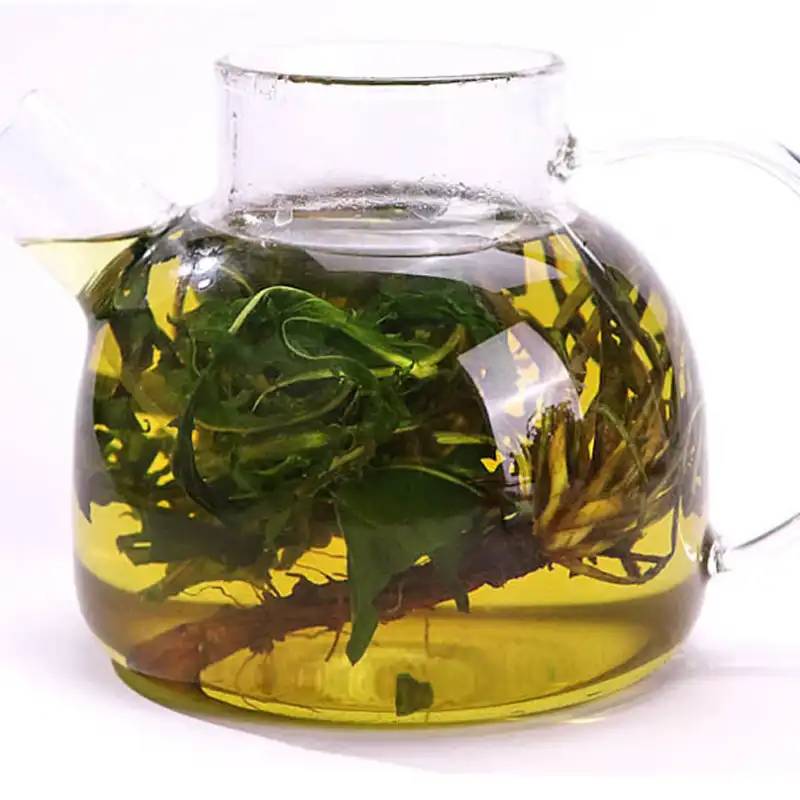
4.2 Pharmaceutical field
Dandelion is a medicinal plant with a long history of clinical use. Dandelion polysaccharides also have a variety of pharmacological effects. There have been some studies on dandelion polysaccharide drugs, such as Li Jian [57] and others who published a patent on the use of dandelion polysaccharides in the preparation of drugs that inhibit angiogenesis in liver cancer cells. Wang Yanping [58] and others prepared a dandelion oral solution, and test results showed that the oral solution had a very good therapeutic effect and is expected to be widely used in medicine and health care.
Lou Liangshui [59] produced a Cordyceps complex fungal polysaccharide tablet containing dandelion polysaccharides, which has anti-tumor, cell repair and anti-mutagenic effects. Although there are currently not many medical products containing dandelion polysaccharides, and they have not been applied on a large scale in the market, dandelion polysaccharides have anti-tumor, anti-inflammatory, hypoglycemic, anti-mutagenic, and hepatoprotective activities, making them have important development potential and application value in the medical field.
4.3 Feed industry
Shuxuan Shan[51] and others found that dandelion polysaccharides, as a kind of carbohydrate, can improve the palatability of animals, increase their average daily food intake, and also improve immune function, improve biochemical indicators in the blood, promote the growth and development of bones and the deposition of calcium and phosphorus, promote the body's digestion and absorption of protein and utilization of nitrogen, thereby ensuring the healthy growth of animals. Zihang Cao[6] and others found that dandelion polysaccharides can have a positive effect on the production performance of laying hens and the fatty acid composition of their eggs. Zihang Cao[60] and others found that dandelion polysaccharides can regulate the cecal microbiota, thereby improving the production performance of laying hens. In summary, many related studies have shown that dandelion polysaccharides can be used in animal feed to improve production capacity.
5 Conclusion
Dandelion is a plant with a long history of medicinal and edible uses. According to the New Revised Materia Medica, it tastes bitter, enters the liver, is cold in nature, and enters the stomach channel. It has the effects of detoxifying, reducing swelling, dispersing lumps, and inducing diuresis. It is widely distributed in most parts of China [61]. Dandelion polysaccharides, as an important component of dandelion with both nutritional value and biological activity, has received widespread attention in recent years. At present, there have been many studies on the extraction process of dandelion polysaccharides. Common extraction methods include hot water extraction, ultrasound-assisted extraction, enzymatic extraction, supercritical extraction, etc. Since each method has its own advantages and disadvantages, many researchers will also choose a combination of methods to improve the extraction rate of polysaccharides. However, the commonly used method for isolating and purifying dandelion polysaccharides is still the traditional method for isolating and purifying polysaccharides, and technological innovation is needed.
For the chemical structure research of dandelion polysaccharides, most of the research is currently only on the primary structure, and there are few reports on the complete structural characteristics of its monosaccharide composition. Most of the research on the activity of dandelion polysaccharides also only focuses on the animal and cellular levels, and the research on its mechanism of action is not yet in-depth enough. The rich pharmacological effects of dandelion polysaccharides make them have huge development potential and market prospects in the fields of food, medicine and feed. In the future, it is necessary to further optimize the extraction, separation and purification technology of dandelion polysaccharides, combine modern analysis technology to further analyze the chemical structure of dandelion polysaccharides, and conduct more in-depth research on the relationship between structure and function, activity and mechanism of action, to provide support for the large-scale application of dandelion polysaccharides to the market.
Reference:
[1] Chen X ,Ji H ,Zhang C , et al.Optimization of extraction process from Taraxacum officinale polysaccharide and its purification, structural characterization, antioxidant and anti-tumor activity[J].Journal of Food Measurement and Characterization,2020, 14(1):194-206.
[2] Fen L ,Lin K F ,Chun J Y , et al.Polysaccharides from dandelion (Taraxacum mongolicum) leaves: Insights into innovative drying techniques on their structural characteristics and biological activities[J].International Journal of Biological Macromolecules,2020,(prepublish):
[3] National Pharmacopoeia Commission. Pharmacopoeia of the People's Republic of China [S]. Beijing: China Medical Science Press, 2015.
[4] Min F ,Xiao Z ,Huaping S , et al.Dandelion (Taraxacum Genus): A Review of Chemical Constituents and Pharmacological Effects.[J].Molecules (Basel, Switzerland),2023,28(13):
[5] Wu Zhigao, Chen Shufang, Li Qingtao et al. Research progress on the extraction and separation of plant polysaccharides and their biological activities [J]. Light Industry Science and Technology, 2023, 39(04): 42-44.
[6] Cao Zihang. The effect of dandelion polysaccharides on the production performance, intestinal flora and egg quality of laying hens [D]. Jilin Agricultural University, 2023. DOI: 10.27163/d.cnki.gjlnu.2023.000771.
[7] Rao Zhiwei, Du Guang, Jiang Qiong et al. Research progress of dandelion root polysaccharides [J]. Strait Pharmacy, 2019, 31(05): 34-36.
[8] Yang Xiaojie, Fu Xuepeng, Li Na. Comparison of polysaccharide content in different organs of medicinal dandelion [J]. Shizhen National Medicine National Medicine, 2011, 22(09): 2228-2229.
[9] Fu Xue-peng, Yang Xiao-jie, Li Ben-li et al. Determination of polysaccharide content and antioxidant properties of different organs of dandelion [J]. Food Research and Development, 2008, (03): 26-28.
[10] Li Qin-yan, Zhong Ying-ying, Zhong Dong-hui et al. Research progress of mushroom polysaccharides [J]. Edible Fungi, 2020, 42(05): 5-8.
[11] Wang L ,Li T ,Liu F , et al.Ultrasonic-assisted enzymatic extraction and characterization of polysaccharides from dandelion ( Taraxacum officinale ) leaves[J].International Journal of Biological Macromolecules,2018, 126846-856.
[12] Cai L, Chen B, Yi F, et al. Optimization of extraction of polysaccharide from dandelion root by response surface methodology: Structural characterization and antioxidant activity[J]. International journal of biological macromolecules, 2019, 140: 907-919.
[13] Guo Huijing. Preliminary study on the extraction, isolation and purification, identification and biological activity of dandelion polysaccharides [D]. Shihezi University, 2019.
[14] Lianyu L ,Fengjie Z ,Ling Z,et al.Carboxymethylation modification, characterization of dandelion root polysaccharide and its effects on gel properties and microstructure of whey proteinisolate.[J].International journal of biological macromolecules,2023,242(P2):124781-124781.
[15] Wu Yanan, Zou Hui, Liu Yuqian et al. Hypoglycemic effect and regulatory pathway of different polysaccharide components of dandelion root [J]. Food and Fermentation Industry, 2021, 47(15): 90-97. DOI: 10. 13995/j.cnki. 11-1802/ts.026115
[16] Wang Libo, Gao Jingyu, Li Tengfei et al. Preparation, structural characterization and probiotic-promoting activity of selenized dandelion polysaccharide [J]. Food Science, 2021, 42(07): 169-175.
[17] Chen X, Ji H, Zhang C, et al. Optimization of extraction process from Taraxacum officinale polysaccharide and its purification, structural characterization, antioxidant and anti-tumor activity[J]. Journal of Food Measurement and Characterization, 2020, 14: 194-206.
[18] Natchanok T ,Subramanian P ,ChangSheng L , et al.Polysaccharide extracted from Taraxacum platycarpum root exerts immunomodulatory activity via MAPK and NF-κB pathways in RAW264.7 cells.[J].Journal of ethnopharmacology,2021,281114519-114519.
[19] Guo H, Zhang W, Jiang Y, et al. Physicochemical, structural, and biological properties of polysaccharides from dandelion[J]. Molecules, 2019, 24(8): 1485.
[20] Wang L, Gao J, Li L, et al. Characterization and Biological Activities of Polysaccharides from Dandelion (Taraxacum officinale) Leaves[J]. Starch-Stärke, 2021, 73(3-4): 2000051.
[21] Zhang, Jing. Extraction, purification, structural analysis and application research of dandelion root polysaccharide [D]. Harbin University of Commerce, 2020. DOI: 10.27787/d.cnki.ghrbs.2018.000027.
[22] Xiao Chaoyong. Research on the Structure and Activity of Dandelion Polysaccharides [D]. Jiamusi University, 2017.
[23] Pei C ,Suyun D ,Zhiqian Y , et al.Structural Characteristic and In-Vitro Anticancer Activities of Dandelion Leaf Polysaccharides from Pressurized HotWater Extraction[J].Nutrients,2022, 15(1):80-80.
[24] Cheng S, He F, Fu L, et al. Polysaccharide from rubescens: Extraction, optimization, characterization and antioxidant activities[J]. RSC advances, 2021, 11(31): 18974-18983.
[25] Iga P ,Rita B ,Stanisław K , et al.Recovery of antioxidants and oils from blackcurrant and redcurrant wastes by ultrasound-assisted extraction[J].Food Bioscience,2024,57103511-.
[26] Shu Yufeng, Lu Jingjing, Chen Xu. Study on the extraction of dandelion polysaccharides and antioxidant activity by ultrasound-assisted method [J]. Processing of Agricultural Products, 2022(13):42-46. DOI:10. 16693/j.cnki. 1671-9646(X).2022.07.010.
[27] Hualiang H ,Gangliang H .Extraction, separation, modification, structural characterization, and antioxidant activity of plant polysaccharides.[J].Chemical biology drug design,2020,96(5):1209-1222.
[28] Li, Fen. Effects of different drying and extraction methods on the physicochemical properties and in vitro biological activity of dandelion polysaccharides [D]. Sichuan Agricultural University, 2022. DOI:10.27345/d.cnki.gsnyu.2022.000668.
[29] Guo Xijuan, Ma Ping, Liu Yuanyang. Research on the optimization of microwave-assisted extraction of dandelion polysaccharides using response surface methodology [J]. Journal of Heilongjiang Bayi Nongken University, 2014, 26(03): 40-44+57.
[30] Zhang Y ,Zhang S .Optimization of Cellulase-assisted Extraction and Antioxidant Activity of Polysaccharides from Taraxacum Mongolicum Hand.-Mazz.[C]//Advanced Science and Industry Research Center.Proceedings of 2021 6th International Conference on Green Materials and Environmental Engineering(GMEE2021).Department of Pharmacology,Medical School,Wuhan University of Science and Technology;,2021:8.DOI:10.26914/c.cnkihy.2021.033915
[31] Xu Lan, Wang Minghua, Qu Juanjuan et al. Enzyme hydrolysis method for extracting dandelion polysaccharides [J]. Food Research and Development, 2016, 37(05): 46-51.
[32] Liu Shanshan, Liu Yaqiong, Zhang Qi et al. Optimization of the double enzyme extraction process of dandelion root polysaccharides and its antioxidant properties [J]. Journal of Food Science and Technology, 2019, 37(06): 108-115.
[33] Wu Y, Li B H, Chen M M, et al. Research progress on ginger polysaccharides: extraction, purification and structure–bioactivity relationship[J]. Food & Function, 2023.
[34] Wang Shan, Huang Shengyang. Research progress on the method of removing protein from plant polysaccharide extract [J]. Food Science and Technology, 2012, 37(09): 188-191. DOI: 10. 13684/j.cnki.spkj.2012.09.033.
[35] Gangliang H .Extraction and deproteinization process of polysaccharide from purple sweet potato.[J].Chemical biology drug design,2021,99(1):111-117.
[36] Guo Huijing, Zhang Weida, Chen Guogang. Research on the decolorization and deproteinization methods of dandelion polysaccharides and their hypoglycemic activity [J]. Food Research and Development, 2020, 41(03): 24-28.
[37] Zhou Tong, Yan Hanyi, Zhu Lixiang et al. Research on the optimization of the decolorization process conditions of dandelion polysaccharides by different methods [J]. Agricultural Products Processing, 2023(22):29-35+39. DOI:10. 16693/j.cnki. 1671-9646(X).2023.11.044.
[38] Li Zilin, Chen Guiyuan. Progress in the decolorization process of traditional Chinese medicine polysaccharide extract [J]. Anhui Agricultural Bulletin, 2023, 29(13): 37-40. DOI: 10. 16377/j.cnki.issn1007-7731.2023.13.039.
[39] Feng R ,Yingying Y ,Kaixuan W , et al. The Effects of Dandelion Polysaccharides on Iron Metabolism by Regulating HepcidinJAK/STAT Signaling Pathway[J]. Oxidative Medicine and Cellular Longevity,2021,20217184760-7184760.
[40] Niu H. Effects of dandelion polysaccharides on breast cancer cell proliferation and apoptosis [D]. Shandong University, 2018.
[41] Song X Y, Liu Q, Yang L et al. Dandelion polysaccharide extraction process and its antibacterial activity [J]. Chinese Pharmacy, 2010, 21(47): 4453-4455.
[42] Wang H . Cellulase-assisted extraction and antibacterial activity of polysaccharides from the dandelion Taraxacum officinale [J]. Carbohydrate Polymers, 2014, 103140-142.
[43] Xiao Chaoyong, Zhang Yu, Wang Yuliang. Extraction and purification of total polysaccharides from dandelion and analysis of their in vitro anti-inflammatory activity [J]. Chinese Journal of Experimental Medicine, 2016, 22(11): 25-28. DOI: 10. 13422/j.cnki.syfjx.2016110025.
[44] Xu J, Pang Q, Sun J et al. Optimization of the extraction process of dandelion leaf polysaccharides assisted by ultrasonic cell disruption and in vitro antioxidant activity [J]. Food Research and Development, 2023, 44(10): 132-139.
[45] Tian Hua, Huang Yujuan. Effect of dandelion polysaccharide on gastric mucosal inflammatory response and MAPK/ERK pathway in rats with Helicobacter pylori-related gastritis [J]. Modern Journal of Integrated Traditional and Western Medicine, 2019, 28(35):3877-3880.
[46] Li Huan, Xu Yanyan, Gao Jinyong et al. In Vitro Anti-inflammatory Effects of Dandelion Root Polysaccharides [J]. Advances in Veterinary Medicine, 2019, 40(05): 75-78. DOI: 10. 16437/j.cnki.1007-5038.2019.05.014.
[47] Yan S , Yin L , Dong R . Inhibition of IEC-6 Cell Proliferation and the Mechanism of Ulcerative Colitis in C57BL/6 Mice by Dandelion Root Polysaccharides [J]. Foods, 2023, 12(20):
[48] Guo Huijing, Chen Guogang, Zhao Zhiyong. Study on the graded alcohol precipitation of dandelion polysaccharides and its hypoglycemic and antioxidant activities [J]. Agricultural Products Processing, 2021(07): 1-5+10. DOI: 10. 16693/j.cnki. 1671-9646(X).2021.04.001.
[49] Jingwen L ,Jiayuan L ,Yangyang C , et al.Hypoglycemic effect of Taraxacum officinale root extract and its synergism with Radix Astragali extract[J].Food Science Nutrition,2021,9(4):2075-2085.
[50] Li S. Research on the mechanism of dandelion polysaccharide and astragalus polysaccharide in combination against HF based on the intestine-liver axis [D]. Jiamusi University, 2022. DOI:10.27168/d.cnki.gjmsu.2022.000031
[51] Shan Shuxuan, Yu Yang, Li Jingshuang et al. Effects of dandelion polysaccharides on immune function, serum biochemical indicators and growth performance of broiler chickens [J]. Feed Research, 2023, 46(03): 30-35. DOI: 10. 13557/j.cnki.issn1002-2813.2023.03.007.
[52] Hu Baosheng. Anti-fatigue effect of different doses of dandelion polysaccharides on mice [J]. Chinese Journal of Gerontology, 2014, 34(19): 5515-5517.
[53] Yang Xiaojie, Fu Xuepeng. Research on the in vitro antitumor and antimutagenic effects of dandelion polysaccharides [J]. Shizhen Traditional Chinese Medicine, 2009, 20(10): 2470-2471.
[54] Ning Le, Zheng Nan, Cai Jianyan et al. Extraction of dandelion polysaccharides and development of its beverage [J]. Cereals, Grains and Oilseeds, 2021, 34(12): 86-89+94.
[55] Nguyen ,Tinh T,Olawuyi , et al.Characteristics of edible jelly enriched with antioxidant and calcium-rich fractions of dandelion leaf polysaccharide extracts[J].Journal of Food Measurement and Characterization,2022, 16(2):1-13.
[56] Bao J ,Chen L ,Liu T .Dandelion polysaccharide suppresses lipid oxidation in Antarctic krill ( Euphausia superba )[J].International Journal of Biological Macromolecules,2019, 1331164-1167.
[57] Li Jian, Ren Feng, Yang Yun, et al. Application of dandelion polysaccharide in the preparation of drugs that inhibit the angiogenesis of liver cancer cells: CN201910078821.X[P].CN109692182A[2024-01-20].
[58] Wang Yanping, Cao Fahao, Li Xi. Development of dandelion oral liquid and determination of functional components [J]. Anhui Agricultural Science, 2016, 44(15):4. DOI:10.3969/j.issn.0517-6611.2016.15.045.
[59] Lou Liangshui. Cordyceps compound fungal polysaccharide tablets: CN201810171716.6 [P]. CN108187034A [2024-01-21].
[60] Zihang C ,Zhenhua L ,Nanyi Z , et al.Effects of dietary dandelion (Taraxacum mongolicum Hand.-Mazz.) polysaccharides on the performance and gut microbiota of laying hens.[J].International journal of biological macromolecules,2023,240124422-124422.
[61] Qin Congcong, Du Qinyuan, Zhang Yimin et al. A botanical study of dandelion [J]. Chinese Pharmacy, 2022, 33(20): 2556-2560.


 English
English French
French Spanish
Spanish Russian
Russian Korean
Korean Japanese
Japanese